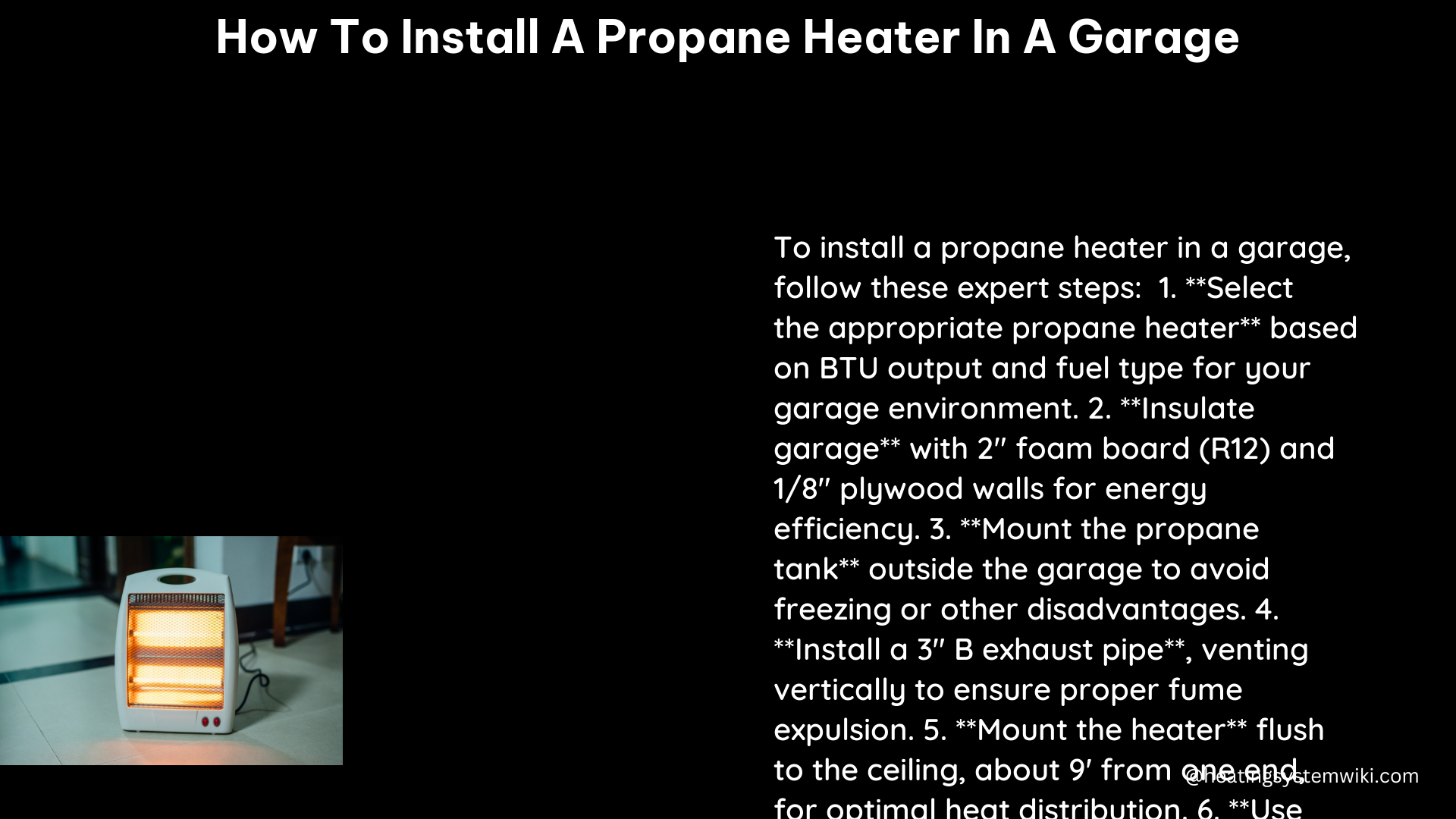Installing a propane heater in your garage can be a game-changer, providing reliable and efficient heating during the colder months. This comprehensive guide will walk you through the step-by-step process of installing a propane heater in your garage, ensuring a safe and successful project.
Selecting the Right Heater
The first step in the installation process is to choose the appropriate propane heater for your garage. The size of your garage will determine the BTU (British Thermal Unit) output required. As a general rule, you’ll need approximately 30-50 BTU per square foot of garage space. For example, the Hot Dog heater featured in the video has a 60,000 BTU output, making it suitable for a medium-sized garage or workshop.
Preparing the Installation Site

Before you begin the installation, it’s crucial to ensure that the installation area is properly ventilated. Propane heaters require adequate airflow to function safely and efficiently. In the video, the heater is mounted on the ceiling, while the forum post mentions the user’s plan to mount it flush to the ceiling, about 9 feet from one end. Carefully consider the placement of the heater to optimize airflow and accessibility.
Installing the Mounting Hardware
To securely mount the vented gas heater, you’ll need to lag-screw two-by-sixes across the ceiling joists, as shown in the article. This corner-mounting technique will not only provide a sturdy foundation for the heater but also improve airflow within the garage.
Lifting the Heater
Using a block and tackle rigging system, as demonstrated in the video, will make the process of hoisting the heater up to the joists and into position much easier and safer.
Securing the Heater
Once the heater is in place, you’ll need to clamp it to the joists along its mounting flanges. Bore clearance holes for carriage bolts in the ready-made cutouts along the mounting flanges, and insert a carriage bolt into each clearance hole to secure the heater, as described in the article.
Attaching the Flue
The T-shaped portion of the flue must be attached to the back of the gas heater. Determine the exact vertical position above the center of this flue pipe on the underside of the roof using a plumb bob, mark it, and cut a hole in the roof for the flue pipe, as outlined in the article.
Installing the Funnel-Shaped Flashing
To waterproof the flue opening, you’ll need to center and mark the oval opening of the funnel-shaped flashing over the cutout, cut away upper shingles along the mark, apply sealant to the lower shingles, and slide the flashing base under the upper shingles, as shown in the article.
Vent Pipe, Weather Ring, and Vent Cap
Insert the vent pipe through the roof and flashing, connect the lower end to the T-shaped flue, secure it with snap-in-place couplings, add the weather ring and vent cap to the upper end of the pipe, and apply sealant to nail heads, as described in the article.
Electrical Connections
Remove the side panel from the gas heater housing to access the electrical components, match wires and secure with wire nuts, and follow the manufacturer’s directions to make electrical connections for components such as the air circulation fan, as shown in the article.
Connecting the Gas Pipes
Apply thread sealant to the gas pipe sections and screw them together, snug the fittings with adjustable wrenches, connect the flexible gas line and tighten the nut, and ensure that the main gas line and shut-off valve are installed before this project, as described in the article.
Technical Specifications
- BTU Output: The heater in the video has a 60,000 BTU output, suitable for a garage or workshop.
- Venting: The heater in the video is vented through the roof using a T-shaped flue and long vent pipe.
- Electrical Requirements: The heater in the video requires electrical connections for components such as the air circulation fan.
- Gas Pipes: The heater in the video is connected to a gas pipe using thread sealant and adjustable wrenches.
DIY Installation
The installation process involves several critical steps, including selecting the right heater, preparing the installation site, installing the mounting hardware, lifting the heater, securing the heater, attaching the flue, installing the funnel-shaped flashing, installing the vent pipe and accessories, making electrical connections, and connecting the gas pipes. It is essential to follow the manufacturer’s instructions and local building codes to ensure a safe and successful installation.
